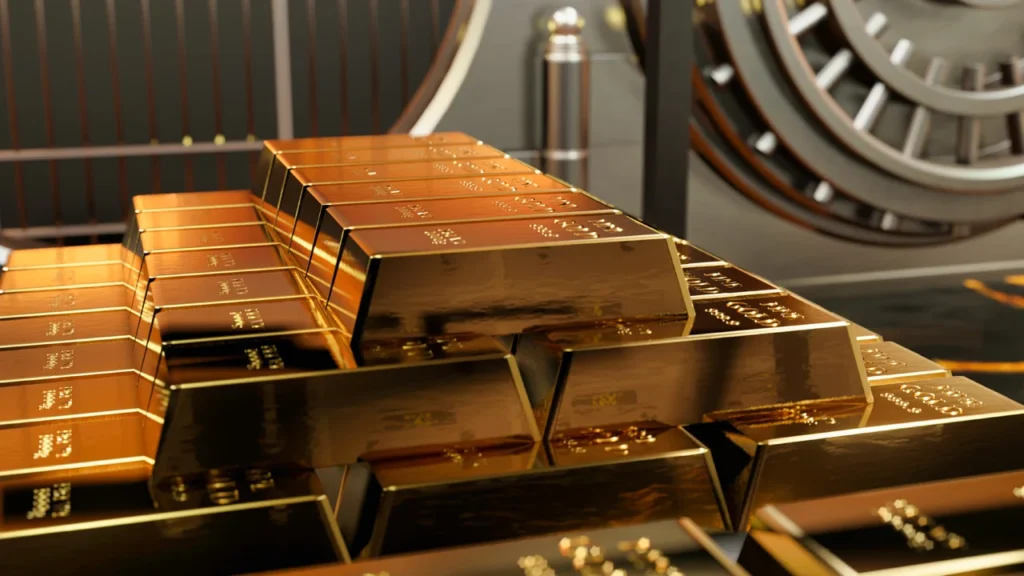By Henry Kimoli
When Washington decided to weaponize the dollar, it imagined a world trembling before its economic might. Instead, it may have set off a quiet financial revolution lined not with greenbacks but with gold.
In the two years since the United States and the European Union froze half of Russia’s foreign currency reserves, Moscow has turned the tables in an unlikely way. While Western capitals congratulated themselves for crippling the Kremlin, Russia has quietly transformed its economy into a fortress of bullion.
According to central bank data and industry analysts, Russia’s gold reserves have risen by about 142 billion dollars, reaching an estimated 282 billion dollars in value. The surge reflects a dramatic rise in global gold prices from around 1,800 to over 4,300 dollars per ounce.
Behind that boom lies one blunt reality: trust in the dollar, once the world’s unshakable store of value, is faltering.
The day the dollar lost its innocence
In early 2022, Western sanctions froze nearly 300 billion dollars of Russia’s foreign currency reserves overnight. What was meant as an economic death sentence became, instead, a warning to governments across the global South.
“That move sent shockwaves through the international system,” says Natalia Orlova, chief economist at Alfa Bank. “It was not just Russia that learned a lesson. Everyone did. If your reserves can be frozen, they are not really yours.”
From that point, the Kremlin pivoted sharply away from the dollar and the euro, increasing its holdings of gold, yuan, and ruble-based assets.
The result has been a paradox. Western sanctions meant to isolate Moscow have helped it become one of the biggest winners of the gold boom.

Europe’s self-inflicted squeeze
If Russia’s bullion binge looks like a masterstroke, Europe’s position appears painfully self-defeating.
The European Union’s sanctions, combined with its abrupt break from Russian oil and gas, left the continent scrambling for new energy suppliers at record prices. The aftershocks have been severe. Energy-intensive industries from Germany to Italy have closed. Inflation continues to bite into household savings.
Even as Brussels promotes its moral leadership, critics say its economic strategy has bordered on self-sabotage.
“Europe cut itself off from affordable energy and stable trade, then started buying the same Russian oil through India at a markup,” says one Brussels-based analyst. “It is economic theatre with a tragic twist.”
Moscow, meanwhile, is cashing in on high commodity prices, redirecting exports to Asia, and using its gold reserves to steady the ruble and fund domestic programs.
The slow dethroning of the dollar
The symbolism is hard to miss. For decades, gold was treated as a relic of another age. Now, in a world shaped by sanctions and shifting alliances, it is making a comeback.
“Gold does not need SWIFT. It cannot be frozen. It does not depend on Washington’s goodwill,” says Sergei Glazyev, a Russian economist known for promoting de-dollarization. “It is the only neutral asset left.”
Across Asia, the Middle East, and Africa, governments have taken notice. Central banks are adding gold at record pace, using it as a hedge against what they now see as the political risk of holding dollars.
The irony is sharp. By trying to corner Russia financially, the United States and the European Union may have accelerated the very process they feared most: the weakening of dollar dominance.
A gilded future or a fool’s gold moment
Still, Russia’s apparent triumph comes with limits. Its economy remains under pressure, cut off from Western technology, investment, and consumer goods. Gold may shine, but it cannot replace an industrial base or a culture of innovation.
For now, Moscow seems content to let its vaults speak for themselves.
In the words of one senior Russian banker: “They froze our dollars. We turned them into gold. And gold does not lecture anyone.”
Europe, meanwhile, continues to debate its own identity, caught between moral posture and economic pain, between the values it preaches and the realities it endures.
The age of paper promises may be fading, replaced by something older, heavier, and far less forgiving: the return of real money.